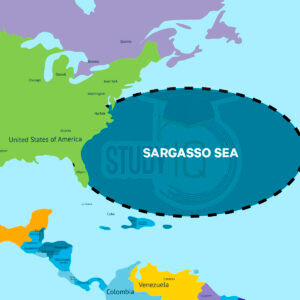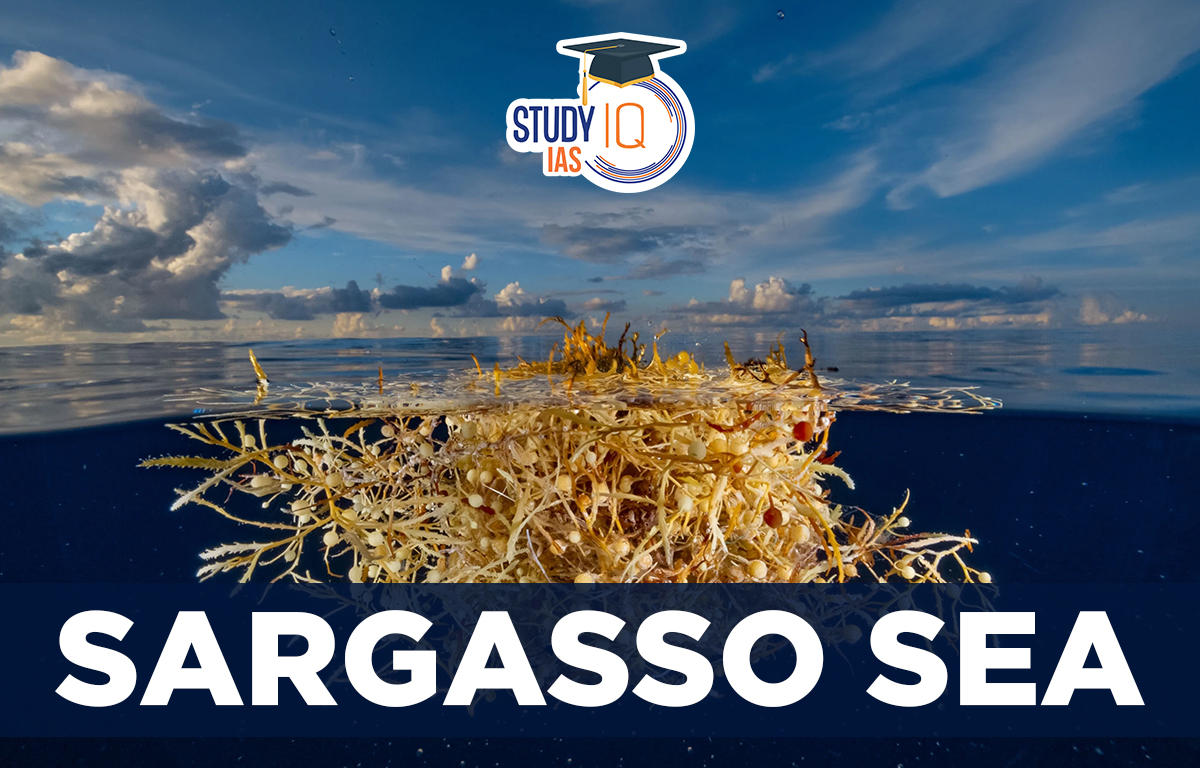Table of Contents
Sargasso Sea
The Sargasso Sea, which is located in the Atlantic Ocean and contains a lot of Sargassum, is a genus of brown macroalgae. It lies in the region designated as the famous “Bermuda Triangle,” the only sea in the world without a land border. Its location is determined by ocean currents, unlike other seas. The Northern Atlantic Subtropical Gyre, a vast network of circling ocean currents, surrounds it.
The Gulf Stream marks the western limit of the Sargasso Sea, the Canary Current the eastern, the North Atlantic Current the northern, and the North Equatorial Current and Antilles Current the southern limit. These boundaries are moving in a clockwise direction. They alter according to the Azores High-Pressure Center from season to season.
Read More: Dead Sea
Sargasso Sea Boundaries
The Gulf Stream, the North Atlantic Current, the Canary Current, and the North Atlantic Equatorial Current all serve as boundaries for the anticlockwise-circulating North Atlantic Gyre, which is also known as the North Atlantic Ocean Current System. It is roughly 1,100 km (680 mi) wide and 3,200 km (2,000 mi) long, and it is located between 20° and 35° north and 40° and 70° west. Bermuda is close to the western seaboard.
The Sargasso Sea is not a sea in the traditional sense but is instead defined by ocean currents that form a gyre and trap the seaweed and other floating debris in its centre.
Sargasso Sea Map
It lies in the North Atlantic Ocean, in between the Canary Islands, the east coast of the United States and the Caribbean Sea.

Read More: Sea of Okhotsk
Sargasso Sea Facts
The Sargasso Sea is a region of the North Atlantic Ocean that is elliptical in shape, calm, and covered in free-floating seaweed from the species Sargassum. It is located within a clockwise-moving ocean current system, with the Gulf Stream (emanating from the Gulf of Mexico) forming part of the western rim, between the parallels 20° N and 35° N and the meridian 30° W and 70° W. The sea is characterised by weak currents, low precipitation, high evaporation, light winds, warm, saline waters, and depths of 5,000–23,000 feet (1,500–7,000 m). These factors, combined with the lack of thermal mixing, result in a biological desert that is largely devoid of plankton, a primary source of food for fish.
The little yet noticeable bladders of the brown seaweed (gulfweed), which resemble small berries, keep it above the water’s surface. Then, as it moves with the wind and current, it appears to get a little resupplied by coastal plants that are floating in from the southwest. A specialised marine life is supported by seaweed, the majority of which is unique to the coastal zone.
Christopher Columbus first described the Sargasso Sea, which includes the Bermuda islands, when he travelled through it in 1492 on his first journey. Columbus was encouraged to keep on because the seaweed indicated the presence of land nearby, but many early navigators had the fear—which was unfounded—of becoming caught in the mass of floating flora.
Sargasso Sea Significance
Shrimp, crabs, fish, and other marine species that have tailored their habitats to this floating algae can also depend on sargassum for vital habitat. White marlin, porbeagle sharks, dolphins, and threatened and endangered eels all reproduce in the Sargasso Sea. The Sargasso Sea is known for its unique ecosystem and is home to a variety of endemic species, such as the Sargassum fish and the juvenile eels known as “leptocephali”.
Read More: Arabian Sea


 Himalayan Ranges of India, Map, Names, L...
Himalayan Ranges of India, Map, Names, L...
 Sadler Commission, History, Objective, R...
Sadler Commission, History, Objective, R...
 Indian Sex Ratio 2024, NFHS-5 Survey Est...
Indian Sex Ratio 2024, NFHS-5 Survey Est...

















